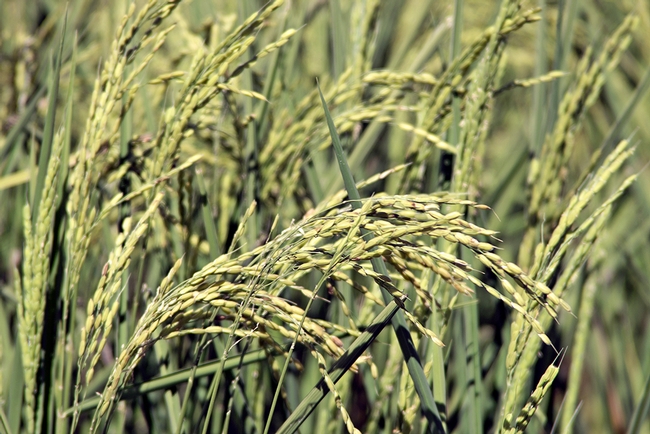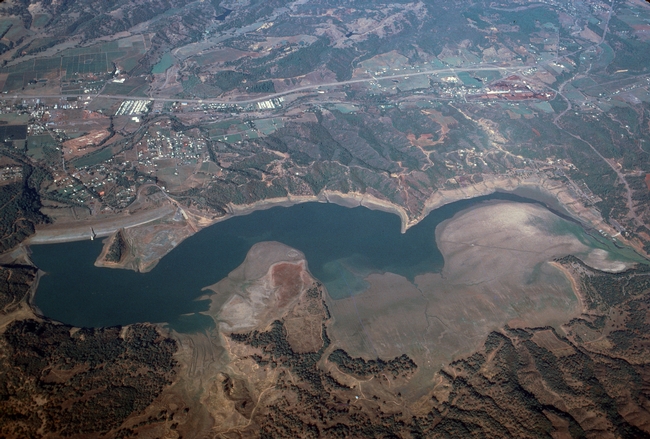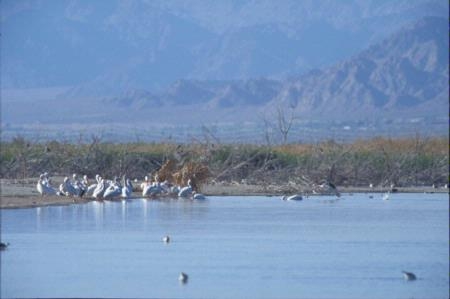Posts Tagged: Bruce Linquist
Harvest is underway for the 2016 UCCE Rice Yield Contest
Contestants in California's rice growing region have worked all summer, and now researchers are harvesting designated plots to be entered into the 2016 UC Cooperative Extension Rice Yield Contest. The contest is in its second year, following a pilot contest in 2015 that included only Butte County farmers.
The contest is held largely for educational purposes, said organizer Bruce Linquist, UCCE specialist based at UC Davis.
“We are providing an opportunity for rice producers and UC scientists to share information about intensive rice production in California,” Linquist said. “We started small last year to be sure our contest wouldn't interfere with the farmers' harvest, and now our contest spans the entire Sacramento Valley.”
Among the five 2015 entrants, farmer Joe Richter came in first, growing variety M-205 and raking in 6.3 tons of rice per acre. Farmer Rodney Jenkins came in second with 5.7 tons per acre growing variety M-206.
The UCCE Rice Yield Contest is modeled after the National Corn Yield Contest, which goes back more than 50 years. The National Corn Growers Association created the contest as a way to encourage advances and new approaches in corn production, and then sharing what is learned on farmer's plots with growers across the country.
Linquist said he believes rice farmers in the contest might try a new approach to boost yield on the contest plot, and if successful, apply it to the rest of the farm in the future. The participating growers are required to share basic crop management information such as variety, planting date, seeding rate, water management; while other practices are asked for but not required.
Yields in the pilot study were high for all the contestants, Linquist said.
“This process gives you an upper limit,” Linquist said. “The information is helpful for sustainable intensification – increasing yields without impacting the environmental footprint.”
The prize for the highest yield was modest in 2015 – a hat and custom engraved hunting knife. But if the UCCE Rice Yield Contest takes off like the National Corn Yield Contest, interest could grow.
“For rice, right now it's more about bragging rights,” Linquist said. “What we'd like to do is get the industry involved. Winning the corn yield contest is a really big deal. The organizers give out a trophy, and the industry gives vacations, small tractors and other prizes.”
From fracking to water affordability, UC takes on new water-related research
Which California communities are more likely to vote down hydraulic fracturing? Are efforts to make safe, affordable drinking water more accessible working? These are among the questions University of California scientists are trying to answer with six new research projects funded by the UC Agriculture and Natural Resources' California Institute for Water Resources.
High-volume hydraulic fracturing, or fracking, a form of natural gas and oil extraction, is water-intensive and could exacerbate water stress. Gwen Arnold, professor in the Department of Environmental Science and Policy at UC Davis, is examining efforts to locally restrict high-volume hydraulic fracturing.
“There's a lot of concern over water pollution and water use in communities,” said Doug Parker, UC ANR California Institute for Water Resources director. “We're looking at the characteristics of communities that have voted on measures to restrict the practice of fracking, both where the measures have failed and where they've passed.”
Parker expects that people on either side of the issue will be able to use the study's finding to better understand differing viewpoints. Decision-makers who may be contemplating policy action on fracking will also benefit from seeing the range of relevant policies passed by other jurisdictions and the conditions that appear to favor or discourage adoption of the policies.
Another research project is assessing the Integrated Regional Water Management approach to address the lack of safe and affordable water in disadvantaged communities throughout the state. In 2011, the California Department of Water Resources funded seven pilot projects to develop models for improving water supplies for these communities.
“We want to take a look at how well Integrated Regional Water Management worked, whether it is meeting the needs of providing safe, affordable drinking water,” Parker said.
Jonathan London, professor in the Department of Human Ecology and director of the Center for Regional Change at UC Davis, and Carolina Balazs, UC presidential postdoctoral research fellow at UC Davis, are evaluating the impact of those efforts in Inyo-Mono counties, Santa Cruz, Los Angeles County, Kings Basin, North Coast, Imperial Valley and Coachella Valley.
- Roya Bahreini, professor in the Department of Environmental Sciences at UC Riverside, is looking at the relationship between water management and air quality in the Salton Sea region of southern California, where low water levels are leading to increased dust from the dry lakebed.
- Igor Lacan, UC ANR Cooperative Extension advisor in San Mateo-San Francisco counties, is investigating the performance of trees used in streetside stormwater management facilities, which are increasingly common in cities across California as communities look for ways to increase groundwater infiltration.
- Bruce Linquist, UC ANR Cooperative Extension specialist in the Department of Plant Sciences UC Davis, is quantifying methylmercury loads from rice fields to determine whether they may be of concern.
- Clarissa Nobile, professor in the School of Natural Sciences at UC Merced is using a high-tech metagenomic approach to research a potential problem for groundwater wells across the state: biofouling, which has the potential to be a costly challenge.
Learn more about these and other California Institute for Water Resources research projects by visiting http://ciwr.ucanr.edu/CIWR_Making_a_difference.
The California Institute for Water Resources integrates California's research, extension, and education programs to develop research-based solutions to the state's water resource challenges. An initiative to maintain and enhance healthy families and communities is part of the UC Agriculture and Natural Resources Strategic Vision 2025.



